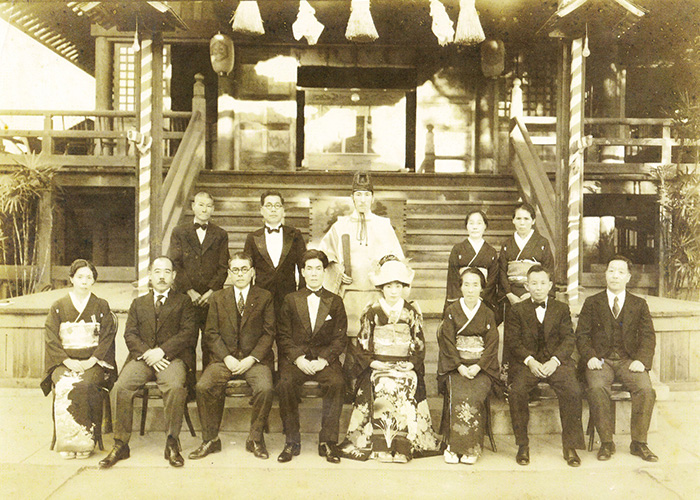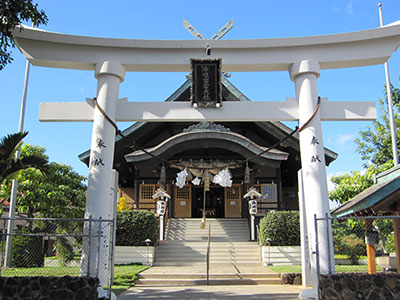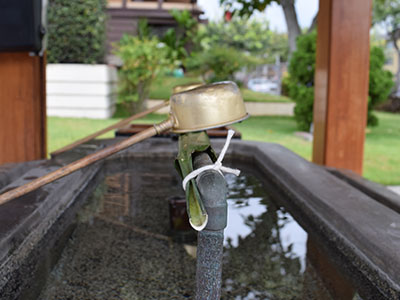
History
Hawaii‘s first Japanese migrant workers (“Gannenmono”) arrived in Hawaii in 1868. In 1885, Hawaii‘s Japanese contract immigrant workers (“Kanyaku Imin”) program begins. During unrestricted immigration era, the late Bishop Katsuyoshi Miyao immigrated to Hawaii.
In 1906, the late Bishop Katsuyoshi Miyao, who was trained as a Shinto priest, arrived in Hawaii to work on the plantation and also celebrated the first Izumo Taisha service for the pioneer Isseis. A temporary Shrine was built in 1907. The present Shrine structure was erected in 1922 by a master builder from Japan. The late Bishop Shigemaru Miyao arrived from Japan in 1931, and after his father`s death in 1935, succeeded him as head priest of this Shrine.

During WW II, while Bishop Shigemaru Miyao and his family were confined in relocation camps on the mainland U.S., the Shrine property became the property of the City & County of Honolulu. After returning to Hawaii in 1945, the family rented a warehouse, one half of which was used as a Shrine and the other half used as the family dwelling. In 1952, over 10,000 signatures petitioning for the return of the Shrine property were presented to the then Honolulu City‘s Board of Supervisors. Long City hearings and court actions followed.
During WW II, while Bishop Shigemaru Miyao and his family were confined in relocation camps on the mainland U.S., the Shrine property became the property of the City & County of Honolulu. After returning to Hawaii in 1945, the family rented a warehouse, one half of which was used as a Shrine and the other half used as the family dwelling. In 1952, over 10,000 signatures petitioning for the return of the Shrine property were presented to the then Honolulu City‘s Board of Supervisors. Long City hearings and court actions followed.
In 1962, the Hawaii Supreme court ordered the lower court to return the Shrine property to the Hawaii Izumo Taisha. By 1962, the deteriorated Shrine structure had been moved to the present location and stood only on empty oil drums. The entire Shrine structure was relocated to the present site in an exchange with the City Redevelopment Agency. An extended fundraising campaign continued until 1968. The shaky, dilapidated Shrine, standing only on the strength of a few posts, was finally repaired and rededicated in 1968.
In 1990, the City & County of Honolulu placed the “Hiroshima Peace Bell” next to the Izumo Taisha gate. This was a gift from Hiroshima City to Honolulu in 1985, in commemoration of the 25th anniversary of the Sister City relationship. A Hiroshima Peace Bell Ceremony is observed annually on August 6th.
In 1993, Bishop Shigemaru Miyao died at the age of 90. He served over 60 years as the local leader of Shinto priests in Hawaii. Bishop Daiya Amano succeeded him as head priest.
In October 2006, the Shrine observed its 100th anniversary. And in 2016, its 110th anniversary was celebrated, The Sixth generation Superintendent (Kancho) of Izumo Taishakyo, Nagahiko Senge, arrived in Hawaii to participate in the anniversary event.

